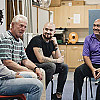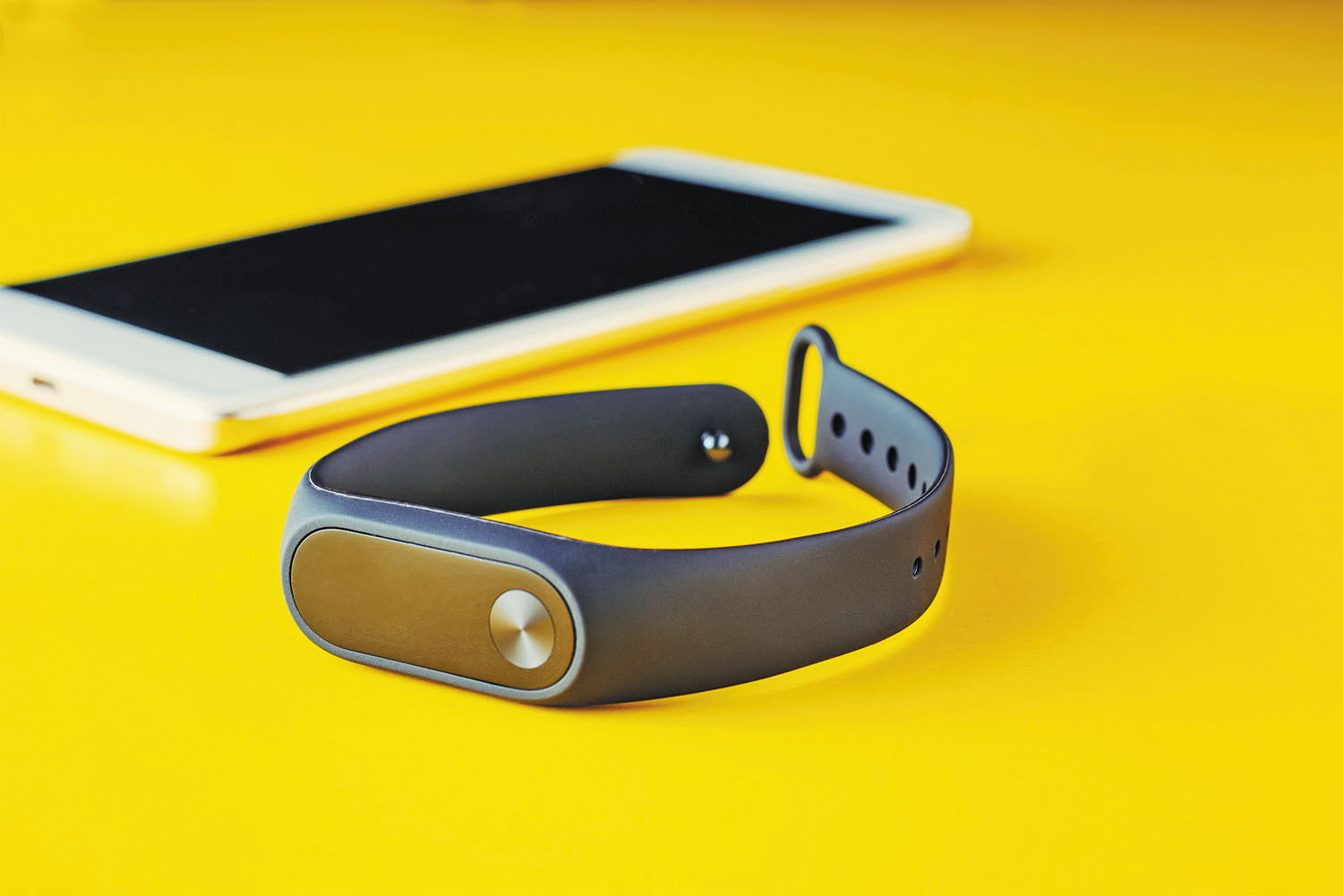
How does prostate cancer treatment affect mental health?

5 timeless habits for better health

What are the symptoms of prostate cancer?

Is your breakfast cereal healthy?

When pain signals an emergency: Symptoms you should never ignore

Does exercise give you energy?

Acupuncture for pain relief: How it works and what to expect

How to avoid jet lag: Tips for staying alert when you travel

Biofeedback therapy: How it works and how it can help relieve pain

Best vitamins and minerals for energy
Medical Devices & Technology Archive
Articles
5 tips to help you stay safe during medical treatment
Medication errors and communication problems may put people at risk.
It's been 20 years since the Institute of Medicine published its landmark report To Err is Human. It found that as many as 98,000 people were dying each year from preventable medical errors, prompting an industrywide patient safety effort that has spanned the past two decades.
An editorial published in JAMA Dec. 29, 2020, notes that in the years since that report came out, hospitals and doctors have made numerous changes that have succeeded in reducing preventable problems, such as hospital-acquired infections, falls, and medication-related errors. But more work remains to be done. Mistakes still happen.
Smartphone apps and trackers may help boost physical activity
Research we're watching
Surveys show that about one in five Americans uses a smartphone app or tracker for monitoring exercise. Evidence for the benefits of these tools is mixed, but a new review suggests they may encourage people to move a bit more.
Researchers pooled findings from 28 studies involving a total of nearly 7,500 people who took part in studies using a smartphone app or activity tracker. They found that these tools have a small to moderate effect in boosting physical activity, motivating people to take an average of 1,850 additional steps per day.
Which blood pressure number matters most?
Ask the doctor
Q. My doctor told me I should get a home monitor to keep tabs on my blood pressure. Which number is most important in the reading, the top or the bottom one?
A. This question comes up often, perhaps because doctors and patients alike tend to pay more attention to the top (first) number, known as systolic pressure. It reflects the amount of pressure inside the arteries as the heart contracts. The bottom (second) number, diastolic pressure, is always lower since it reflects the pressure inside the arteries during the resting phase between heartbeats.
No place like home for accurate blood pressure checks
Research we're watching
Reliable blood pressure readings are vital for diagnosing high blood pressure and estimating a person's risk of heart disease. New research suggests that using a home blood pressure monitor may be more dependable than other methods.
Doctors have long relied on office visits to check people's blood pressure. But growing evidence shows that readings done outside a doctor's office are more closely linked to a person's risk of heart-related problems. Ambulatory blood pressure monitoring (ABPM) involves wearing a device that automatically records blood pressure every 30 to 60 minutes for 24 hours, but it's not widely available.
Over-the-counter hearing aids: Are they ready yet?
They're not yet FDA-approved, but the devices are available and safe — if you know what to look for.
When Congress passed the Over-the-Counter (OTC) Hearing Aid Act in 2017, it opened up a new world of possibility for people with hearing loss. Instead of paying $5,000 for a pair of FDA-approved hearing aids and follow-up service, you could pay hundreds of dollars for an OTC pair from any seller — no doctor appointments, hearing tests, or fittings needed. The devices would have the same fundamental technology as traditional hearing aids, they'd be targeted to people with perceived mild-to-moderate hearing loss, and the FDA would ensure quality by regulating and approving the OTC devices.
But almost four years later, the OTC hearing aid category and its safety and labeling rules are still tied up in red tape.
Can a tracker or smartphone app help you move more?
News briefs
Wearable activity or fitness trackers and smartphone apps are helpful for goal setting and measuring how many steps you take or how much time you spend exercising. But do they motivate you to become more active? Probably a little, finds a review of randomized controlled trials published online Dec. 21, 2020, by the British Journal of Sports Medicine. Researchers combed through 28 studies that included a total of more than 7,400 adults (ages 18 to 65) who used fitness trackers or apps for an average of three months. Compared with people who did not use the devices, people who did increased their activity by 1,850 steps per day. Apps and trackers that included prompts and cues to stay active appeared to be most effective. If your smartphone doesn't already have a built-in basic fitness tracker that counts your steps and calories burned, you can find an app that does. Some are free. Fancy tracking devices, with all the bells and whistles, including heart rate monitors and cellphone capability, cost as much as $1,300. But even the simplest ones help remind you to move.
Image: © azy_Bear/Getty Images
Treating heart attacks: Changes from Eisenhower’s era to the present day
In the 1950s, doctors offered mainly morphine and bed rest — a far cry from the many procedures and medications provided today.
During a round of golf one autumn afternoon in 1955, President Dwight Eisenhower experienced what he assumed was indigestion. After he awoke at 2 a.m. the following morning with severe chest pain, his personal physician administered several shots of morphine. It wasn't until 1 p.m. that afternoon that an electrocardiogram revealed that the president had experienced a heart attack.
Cardiologist Dr. Thomas Lee, professor of medicine at Harvard Medical School, detailed Eisenhower's experience in the Oct. 29, 2020, issue of The New England Journal of Medicine. His piece focuses mainly on how Eisenhower's cardiologist, Paul Dudley White, communicated the event to the public. As Dr. Lee wrote, "Heart attacks became less mysterious and frightening to millions of Americans that day."
The beat goes on
Learn when, how, and why you should keep track of your heartbeat.
Soon after you wake up tomorrow morning, before you even sit up in bed, take your pulse. It's fairly easy if you have a clock or timer nearby (see "Measuring your heart rate"). Known as your resting heart rate, this value ranges from 60 to 100 beats per minute in most adults.
"To get a good sense of your resting heart rate, check it every few mornings over the course of several weeks," advises cardiologist Dr. Aaron Baggish, director of the Cardiovascular Performance Program at Harvard-affiliated Massachusetts General Hospital. It's best to measure your resting heart rate when you've been getting your typical amount of sleep and exercise and aren't feeling ill or dehydrated.
Telemonitoring tied to fewer heart attacks, lower medical costs
News briefs
If your doctor or pharmacist offers a service to monitor blood pressure measurements you send from home (called telemonitoring), consider taking advantage of it. Past research has shown that telemonitoring — often paid for by Medicare — may help you reduce your blood pressure. And a study published online Aug. 31, 2020, by Hypertension suggests telemonitoring is also associated with a long-term reduction in heart attacks, strokes, and medical costs. The recent study is a follow-up to a randomized controlled trial from 2013 that divided 450 people into two groups: those who received routine primary care, and those who received a year of telemonitoring services with a pharmacist who helped manage their treatment. People in the telemonitoring group had lower blood pressure for up to two years afterward, compared with people who received routine care. In the recently published follow-up, which followed the same participants for five years, researchers found there were about half as many heart attacks, strokes, and hospitalizations in the telemonitoring group as there were in the group that received routine care. Because there were fewer cardiovascular problems, people in the telemonitoring group also saved an estimated $1,900 each in medical costs.
Get connected with telemedicine
The COVID-19 pandemic has prompted a surge in telemedicine visits. Here's what you need to know about virtual health care.
Telemedicine — interactions with your doctor by video — has been slowly growing for years. But when the COVID-19 pandemic hit the United States earlier this year and forced people into isolation, this emerging form of virtual health care took off.
"In 2020, we've seen a sharp hockey stick–like movement in the number of telemedicine visits," says Dr. Joseph Kvedar, a dermatologist with Harvard-affiliated Massachusetts General Hospital and president of the American Telemedicine Association. "The experience has shown both patients and doctors the many ways telemedicine can improve health care in the current environment and beyond. It appears to be here to stay."

How does prostate cancer treatment affect mental health?

5 timeless habits for better health

What are the symptoms of prostate cancer?

Is your breakfast cereal healthy?

When pain signals an emergency: Symptoms you should never ignore

Does exercise give you energy?

Acupuncture for pain relief: How it works and what to expect

How to avoid jet lag: Tips for staying alert when you travel

Biofeedback therapy: How it works and how it can help relieve pain

Best vitamins and minerals for energy
Free Healthbeat Signup
Get the latest in health news delivered to your inbox!
Sign Up











